Pineapple fiz is a seasonal pineapple variation on the fiz or fizz cocktail with fresh and warming pick me up flavours from a homemade pineapple soda with ginger and turmeric fermented from scratch with a ginger bug starter, paired with honey, fresh lemon juice and blended aged Jamaican rum. Rather than try to recreate the flavour of vintage Santa Cruz Rum I have simply used what I had to hand in my home bar – a blended aged Jamaican rum – it’s not quite what the rum version of the original Fiz calls for but it works beautifully with the pineapple, ginger and turmeric. The Fiz is a Sour that is lengthened with seltzer water but is short enough to be drunk quite quickly – it was used as a refreshing general pick me up and a hangover cure. The pineapple fiz offers a seasonal pineapple twist on the rum version of the recipe – while following the Fiz formula it departs from this through use of honey rather than gum syrup, a bespoke spiced pineapple soda instead of seltzer water and use of a blended aged Jamaican rum. The pineapple soda can also be served straight up as a non-alcoholic but very flavoursome and refreshing drink. Pineapple has a foamy head when made into a soda that fits wonderfully with the fiz – this drink has a lovely spiced pineapple foamy fizz on top and is garnished with a dehydrated pineapple slice that looks remarkably like a wonderful yellow flower.
What is a Fiz?
A Fiz, also known as a Fizz, is a Sour calling for lemon juice, gum syrup, spirit, lengthened with soda water. The Fiz is served in a small bar glass and is meant to be drunk straight away rather than lingered over – it is not served with ice but the citrus, spirit and gum syrup are shaken with ice before being topped with soda water. The Fiz first appears in Jerry Thomas’ 1876 Bar-tender’s Guide (Thomas 1876: 90) and David Wondrich in Imbibe (2015: 133-4) advises it was a pick me up cocktail with refreshing characteristics being a Sour closely related to the Punch formula (strong, sweet, sour, weak, spice) but without the spice element. For more on the history of the Fiz and related drinks see my post on Apple Gin Fizz. The Fiz could be made with Whiskey, Brandy, Gin or Santa Cruz Rum (for more about the flavour profile of vintage Santa Cruz Rum see below in the section How is the pineapple fiz different). There are variations on the Fiz which include additional ingredients such as strawberries, egg whites, cream, whole eggs and featuring larger serving glasses such as a Collins glass – for more on the history of the Fiz see David Wondrich in Imbibe (Wondrich 2015: 132-140) and for an extensive list of Fizz recipes including a Pineapple Fizz see Harry Craddock’s The Savoy Cocktail Book (Craddock 1930: 192-200).
How to make a Fiz?
Jerry Thomas (1876: 90) describes how to make the ‘Whiskey Fiz’ – it is in this Whiskey recipe he provides the root Fiz formula which variations with other spirits follow.
Fiz formula – gum syrup, lemon, spirit (ice to shake), seltzer water
The Fiz formula includes the following ingredients:
- Gum syrup
- Lemon juice
- Spirit (Whiskey, Brandy, Gin, Santa Cruz Rum)
- Ice (to shake gum syrup, citrus and spirit)
- Seltzer water
- Glassware: small bar glass (no ice to serve)
Fiz method – shake & strain, top with soda
Jerry Thomas (1876: 90) in his Bar-tender’s Guide writes that the Fiz is to be served in a ‘small bar glass’ – first citrus, gum syrup and spirit are added to a glass and then he writes:
“Fill the glass half full of shaved ice, shake up well and strain into a glass. Fill up the glass with seltzer water from a syphon and drink without hesitation.”
Thomas’ (1876: 90) Santa Cruz Rum Fiz follows the same root Fiz formula provided in his Whiskey Fiz recipe, he writes:
“The same as Whiskey Fiz, substituting Santa Cruz rum for Whiskey.”
Harry Craddock (1930: 199) in The Savoy Cocktail Book provides a recipe for a variation on this classic Fiz formula with his Pineapple Fizz that calls for pineapple juice, sugar, Bacardi Rum to be shaken and topped with soda water. Craddock (1930: 199) writing specifically about how to make a Pineapple Fizz details the same method of shake and strain and top with soda as Thomas (1876: 90):
“Shake well, strain into medium size glass and fill with syphon soda water.”
How is the pineapple fiz different?
The pineapple fiz offers a distinctive pineapple flavour to the rum version of the Fiz in the form of a homemade fermented pineapple soda spiced with ginger and turmeric and paired with lemon juice and honey and a blended aged Jamaican rum. The pineapple fiz adds pineapple flavour through a fermented soda using a raw cold process maceration to produce a spiced syrup which offers a more intense spiced pineapple flavour than the Pineapple Fizz recipe offered by Harry Craddock (1930: 199) where fresh pineapple juice is used with a light rum. Using a blended aged Jamaican rum paired with the intense dry spiced pineapple flavour of the soda along with lemon juice and honey offers an intense dry spiced pineapple flavour and a foamy texture. The pineapple fiz is garnished with a slice of dehydrated pineapple that looks like a beautiful yellow flower – complete with a textured centre courtesy of the pineapple core which can be dehydrated along with the fruit in slices (only the outer skin is removed).
Honey
I have opted to use a 1:1 honey syrup in the pineapple fiz rather than gum syrup to add extra frothiness to the Fiz and for delicious flavour that works so well with ginger, turmeric, and pineapple.
Lemon Juice
In this pineapple fiz recipe I have retained the original lemon juice from Jerry Thomas’ 1876 Fiz recipe.
Blended aged Jamaican rum
In this pineapple fiz recipe I have used a blended aged Jamaican rum that pairs well with pineapple – this choice was based for the most part on what I had available to me that worked well with the soda that I had made. I already had Appleton Estate Jamaican Rum, so I made use of this – as I was at the time of developing this recipe limited in my shopping trips as we were staying at home. However, the form of Santa Cruz Rum for which the rum version of the Fiz calls is sadly noted by David Wondrich (2015: 74-75) in Imbibe to not be available – it is possible he recommends to approximate the flavour by carefully blending rums to add their distinctive flavour characteristics. In contrast Harry Craddock’s (1930: 199) Pineapple Fizz recipe uses fresh pineapple juice paired with a light rum for a lighter and fresher fizz. My version of the pineapple fiz includes complex flavours created through the cold process of maceration used to create the pineapple syrup which is spiced with coriander and cinnamon and rich demerara sugar, combined with cooled sweetened ginger and turmeric tea adding another layer of rich spice that is accentuated by the process of fermentation in which the sugars are reduced by the starter culture to produce a dry spiced bubbly pineapple soda with a foamy head. The intense dry spiced pineapple works well with the complexity of the blended aged Jamaican rum while the bubbly carbonated texture and foamy head create their own fizziness that embody the refreshing experience of the pineapple fiz as a pick me up.
Fermented pineapple soda
Fermented pineapple soda featured in the pineapple fiz is made with 3 components using different processes which I have combined in the recipe below:
- Cold maceration syrup, often used in shrub syrup making
- Heat based infusion to create cooled sweetened tea, commonly used as a base for ginger beer making
- Fermentation with a ginger bug starter culture to create carbonation which also makes for subtle changes in flavour with intense base flavours and a drier (less sweet) soda
Below I will unpack how I came to combine these processes of cold maceration, heat based infusion and fermentation to create a pineapple soda.
1) Cold process maceration pineapple syrup
A pineapple syrup is made by long slow cold maceration with rich demerara sugar and pre-frozen fresh in season pineapple (frozen pineapple yields more juice than fresh – for more on the science of juice see Dave Arnold’s (2014) wonderful book Liquid Intelligence) spiced with coriander and cinnamon. I have adapted my pineapple shrub syrup recipe to create the pineapple syrup used here and it draws on the cold process method outlined by Michael Dietsch (2016) in his very useful book Shrubs – the cold process allows for a brighter fruit flavour in the syrup. Syrups made using a cold process maceration allow for the development of complex flavour combinations using herbs, spices, fruit, and vegetables with sugar.
2) Heat based infusion – ginger & turmeric tea sweetened and cooled
The rich pineapple syrup is added to a cooled sweetened ginger and turmeric tea made by adding sliced ginger and turmeric along with sugar to boiling water and infusing with heat – the tea is then allowed to completely cool. A form of this ginger tea or other cooled tea is the base for many ginger beer or tea soda recipes.
3) Fermentation with a ginger bug starter culture
Rather than adding vinegar to the cold process pineapple syrup for a shrub syrup I have added a ginger bug starter to ferment the syrup combined with a cooled sweetened ginger and turmeric tea. For more about how to make and maintain a ginger bug starter see my post on Ginger Beer Spiders. For the ginger bug starter I have referred to the method outlined by Holly Davis is her amazing book Ferment (2017) as well as the very helpful elaboration on experimenting with other roots such as turmeric and galangal in Sandor Katz’s (2012: 150-151) The art of fermentation.
Making & maintaining a ginger bug starter
The ginger bug starter is made by fermenting grated ginger root with sugar and water over a period of a week where the starter is fed each day with more ginger, sugar, and water. The resulting starter is then maintained by regular feeding and can be used to make ginger beer and fruit and tea sodas. I include ingredients and instructions to make a ginger big starter in the recipe below.
Tip – uses for a ginger bug starter
A ginger bug can be used to make ginger beer for use in Gin Bucks and Dark and Stormy cocktails along with a range of fruit and tea based sodas for use in drinks and cocktails such as grapefruit for use in a La Paloma or blood orange for use in an Americano.
Fermentation of the pineapple soda
The pineapple soda is first fermented in a large crock or vessel for 1-4 days and carbonation is then increased further by bottling in flip top glass bottles for an additional second round of fermentation of between 2-3 days. The soda is done when it is very bubbly and has an attractive frothy head when opened – an interesting characteristic of pineapple is its ability to froth – the carbonation process enhances this frothiness.
Tip – how to avoid explosions & spills
I like to store my flip top bottles in an esky as I can control the temperature with an ice brick and the esky serves to capture any explosions – I have had very few using this method and burping or releasing CO2 from the flip tops by opening the bottles daily. Once the soda is ready remove it to the fridge and use within 2 weeks. The rate of fermentation increases in warmer weather and it is then that carbonation increases and explosions are more likely.
Cold maceration, heated infusion, fermentation & flavour
The flavour profile of the fermented pineapple soda used in the pineapple fiz is rich dry pineapple with heat from ginger and turmeric and spice from coriander and cinnamon. The process of cold maceration allows for a rich bright raw pineapple flavour to be extracted from the pineapple and combined with sugar and spices for a thick and flavoursome syrup. The addition of a cooled sweetened ginger and turmeric tea offers a further element of spice and heat extracted through heat based infusion. Fermentation of the pineapple syrup and the cooled tea offers subtle changes in flavour – as the sugar in the syrup and tea are eaten by the starter culture and the soda becomes carbonated and dryer (less sweet) – but with a rich pineapple and spice flavour and a foamy head. Although being a cold refreshing drink the fermented pineapple soda is also warming and heartening – perfect for creating a winter fiz pick me up cocktail with a wonderful foamy fizz paired with blended aged Jamaican rum, lemon, and honey.
Dehydrated pineapple garnish: edible flower shaped dried pineapple
The pineapple fiz is garnished with a slice of dehydrated pineapple – easy to make and looks so fantastic being like a wonderful yellow flower. Pineapple is washed peeled of the outer skin and then thinly sliced and dehydrated in an air dehydrator for around 10 hours on medium heat (depending on the make and model of your air dehydrator). Dehydrating is a great way to preserve in season fruit and vegetables for future use and wonderful for making beautiful garnishes. It can also be used to upcycle items that would otherwise go to waste – left over citrus can be sliced thinly and dehydrated as can many other fruits and vegetables. These dehydrated pineapple slices make for a simple and amazingly beautiful garnish that show off the natural form of the pineapple including the core which turns into an edible textured centre of the beautiful yellow flower shape.
Pineapple fiz: Pick me up fizz cocktail
Print RecipeIngredients
- Ginger bug starter: 1 tablespoon ginger with skin on, washed and grated
- 1 tablespoon dark muscovado sugar
- 100mls water
- Ginger bug daily feed for 1 week: 1 tablespoon ginger with skin on, washed and grated
- 1 tablespoon dark muscovado sugar
- 50mls water
- Fermented pineapple soda: 1 cup pre-frozen fresh pineapple
- 220grams demerara sugar (1/2 cup or 125grams for pineapple syrup, remaining 95grams for ginger and turmeric tea)
- 100grams sliced ginger
- 120grams sliced turmeric
- 1 litre boiling water
- 3 ¼ cups cool water (based on measuring yield of pineapple syrup – mine was ¾ cup – the cool water and syrup combined need to add up to 1 litre or 4 cups for a 2 litre batch of soda, adjust as required based on your syrup yield)
- 1 teaspoon coriander seeds
- 1 cinnamon stick
- ½ cup strained ginger bug
- Dehydrated pineapple slices: 1 pineapple
- 1:1 Honey Syrup: Equal parts honey and hot water
- Pineapple fiz cocktail: 1 bar spoon 1:1 honey syrup
- Juice of ½ a freshly squeezed lemon
- 2 shots blended aged Jamaican rum – Appleton Estate used here
- Fermented pineapple soda to top
- Ice to shake
- Glassware: small bar glass, or other medium tall glass
- Garnish: dehydrated pineapple slice
Instructions
Ginger bug starter: Add grated ginger, sugar and water to a clean mason jar and stir with a wooden spoon to dissolve sugar
Cover with a clean cloth and store in a cool dark place
Maintain ginger bug: Remove the ginger bug from storage daily and feed 1 tablespoon of grated ginger and sugar and 50mls of water and stir with wooden spoon for approximately 1 week – it is ready when bubbles appear.
If keeping and maintaining the ginger bug for further use, you can either continue to feed as above daily and store at room temperature or arrest the fermentation process by refrigerating the bug and feeding once per week with the same daily feed then placing back in the fridge.
When ready to use a refrigerated bug simply begin the daily feeding process and store at room temperature until bubbles form.
Fermented pineapple soda: For the pineapple syrup make pre-frozen fresh pineapple the night before you start making the syrup – simply wash, peel, core and dice 1 cup of fresh pineapple and place in a container in the freezer to freeze overnight
Combine the pre-frozen pineapple with spices and ½ cup demerara sugar in a non-reactive container and allow to macerate overnight in the fridge or on a countertop for up to 8 hours
When the pineapple has defrosted muddle or mash with a potato masher to release the juice and stir
Once a thick syrup has formed strain out the spices and pineapple – reserve the pineapple pieces for another use, it is delicious in desserts
Measure the yield of your syrup – this is important because the total 1 litre of cool ingredients will vary depending on the yield – mine was ¾ cup – thus I needed to add 3 ¼ cups cool water to make up 1 litre of cool ingredients for a 2 litre batch of soda
For the ginger and turmeric tea wash the ginger and turmeric to remove any dirt, leave the skin on, slice thinly
Add the sliced ginger and turmeric and the remaining sugar to a large saucepan and cover with 1 litre of boiling water and allow to steep until completely cool
Strain the cooled tea and add the pineapple syrup, cool water and strained ginger bug starter to a fermenting crock or large glass jug or bowl (the fermenting vessel should be glass or porcelain or plastic, not metal)
Cover with a clean tea towel
Stir 3 times a day with a wooden spoon to encourage fermentation
Ferment from 1-4 days depending on the heat
When bubbles form the soda is ready - decant into clean glass flip top bottles for a further 2-3 days
Burp the bottles daily by releasing the flip top to let out excess CO2 – cover the top with a clean tea towel and do this over the sink to avoid the top flying off or any spills – see my tips above it’s useful to store the flip tops in an esky to control temperature and contain any explosions or spills
When the soda is very bubbly and fizzy it is ready to use
Dehydrated pineapple slices: Wash and peel a pineapple
Thinly slice into rounds and lay them on your dehydrator trays so they are not touching
Dehydrate as per model instructions – mine was 10 hours on medium, rotating trays twice during this time
Check that the slices are completely dried out
When done allow to cool and then store in a clean glass jar
1:1 Honey syrup: Mix equal parts honey with hot water and stir to combine, refrigerate leftover syrup in a clean glass jar
Pineapple fiz cocktail: Place a slim tall glass or small bar glass in the freezer to cool
Add honey syrup, lemon juice and rum to a cocktail tin with ice
Seal your tins
Shake and strain into prepared glass
Top with pineapple soda
Garnish with a dehydrated pineapple slice – I used a small wooden peg to attach the dehydrated pineapple slice to the glass
Notes
Shrub syrups
Michael Dietsch (2016). Shrubs: An Old Fashioned Drink for Modern Times, Second Edition. Countryman Press: New York.
Fermenting
Holly Davis (2017). Ferment: A guide to the art of making ancient cultured goods. Murdoch Books: Crows Nest, Sydney.
Sandor Katz (2012). The Art of Fermentation. Chelsea Green Publishing: Vermont.
Cocktail manuals
Dave Arnold (2014). Liquid Intelligence: The Art and Science of the Perfect Cocktail. W.W. Norton & Company: New York & London.
Harry Craddock (1930). The Savoy Cocktail Book. Dover: New York.
Jerry Thomas (1876 revision of 1862 imprint). The Bar-tender’s Guide: or how to mix all kinds of plain and fancy drinks. Dick & Fitzgerald: New York. Available online in EUVS Vintage Cocktail Books library.
David Wondrich (2015). Imbibe. Perigree: New York.
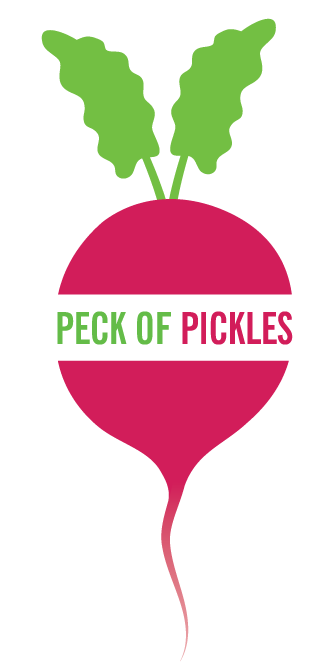
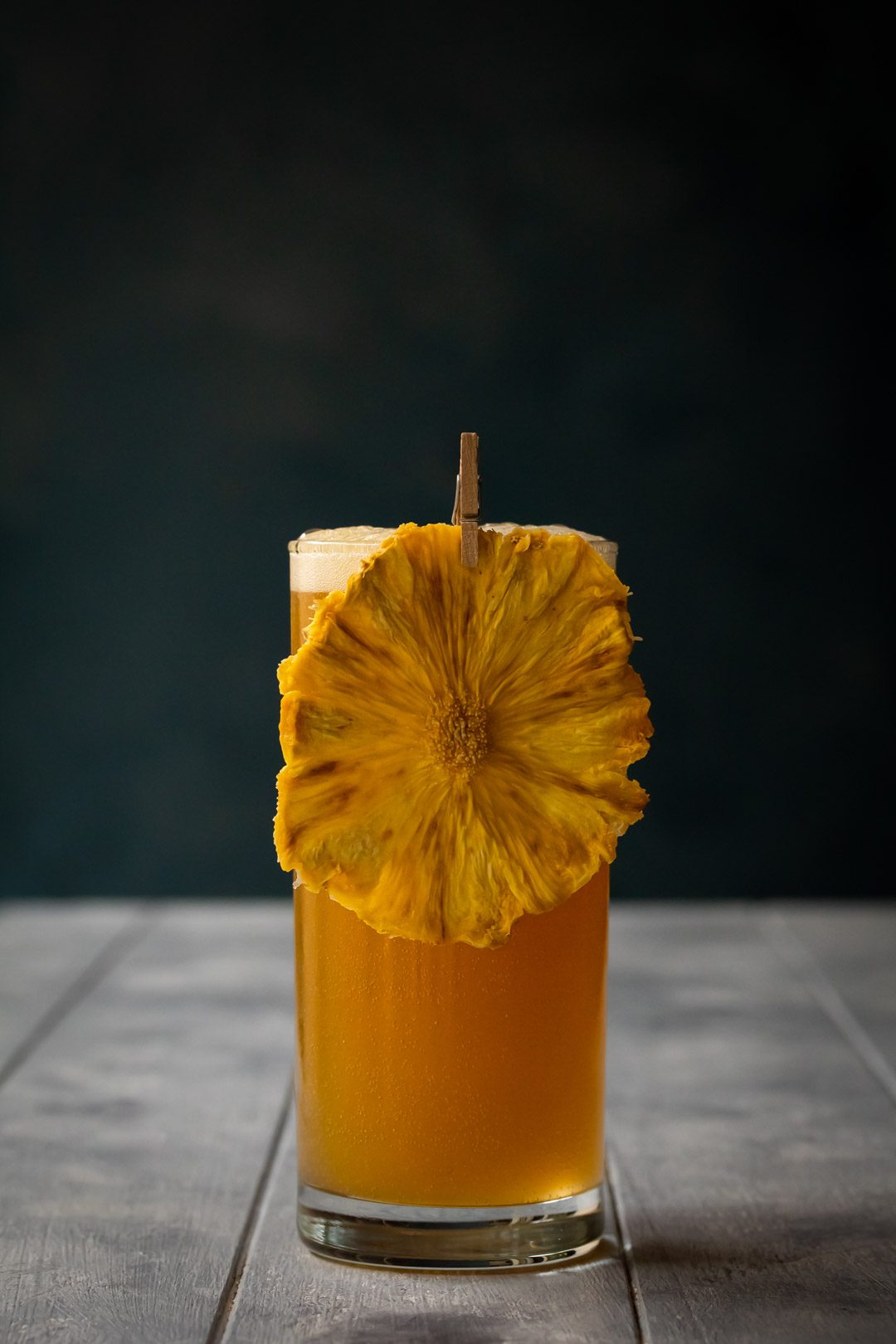
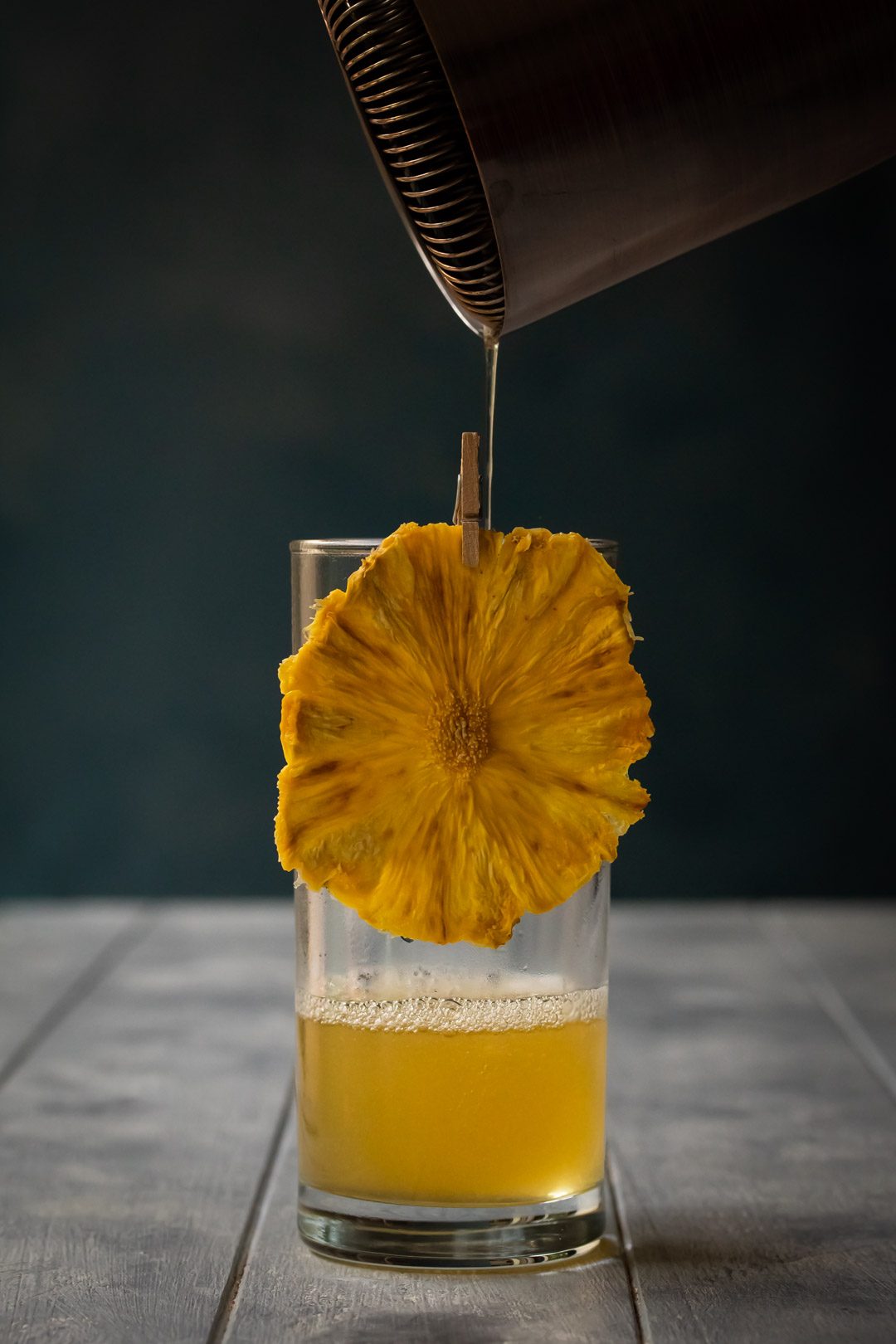
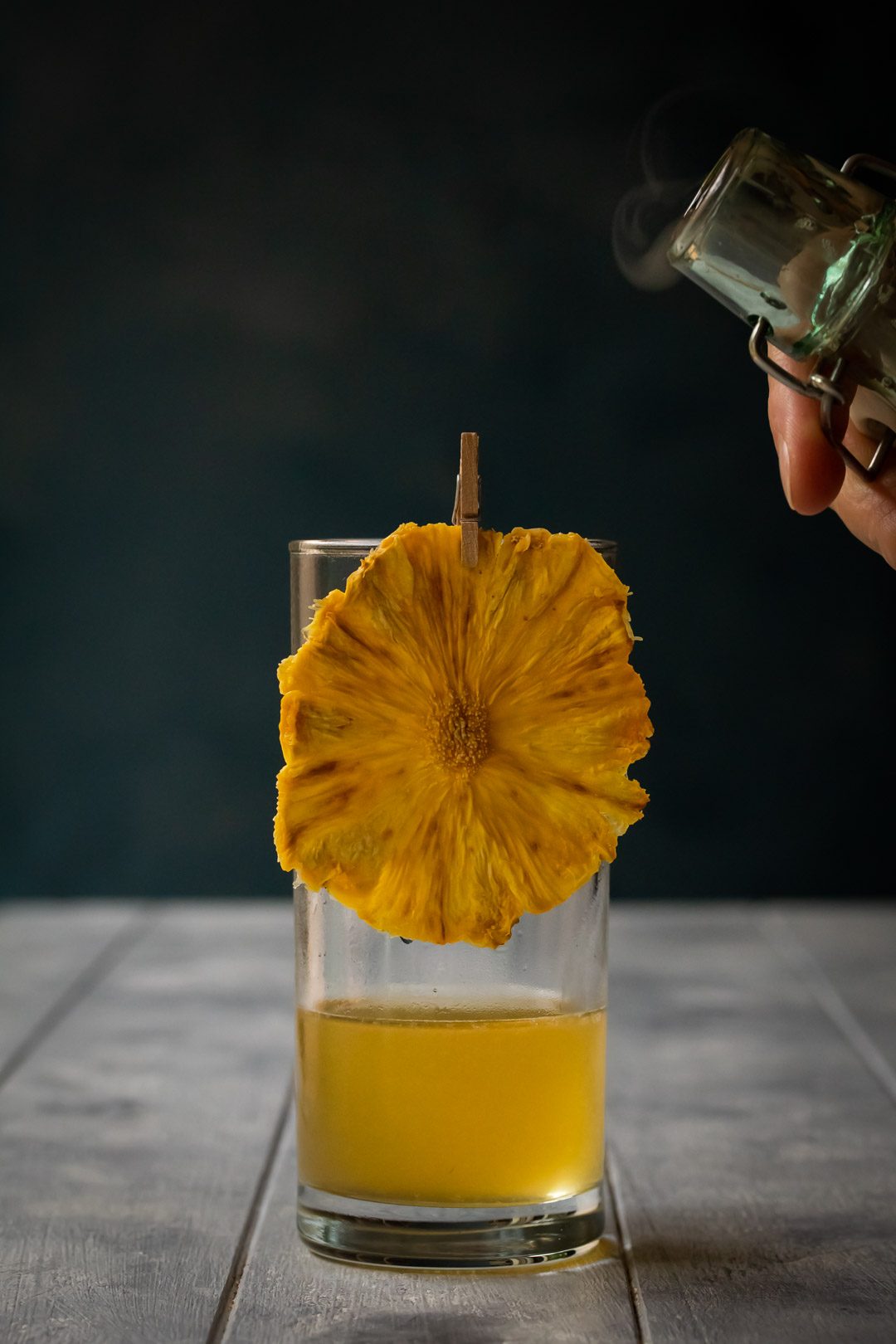
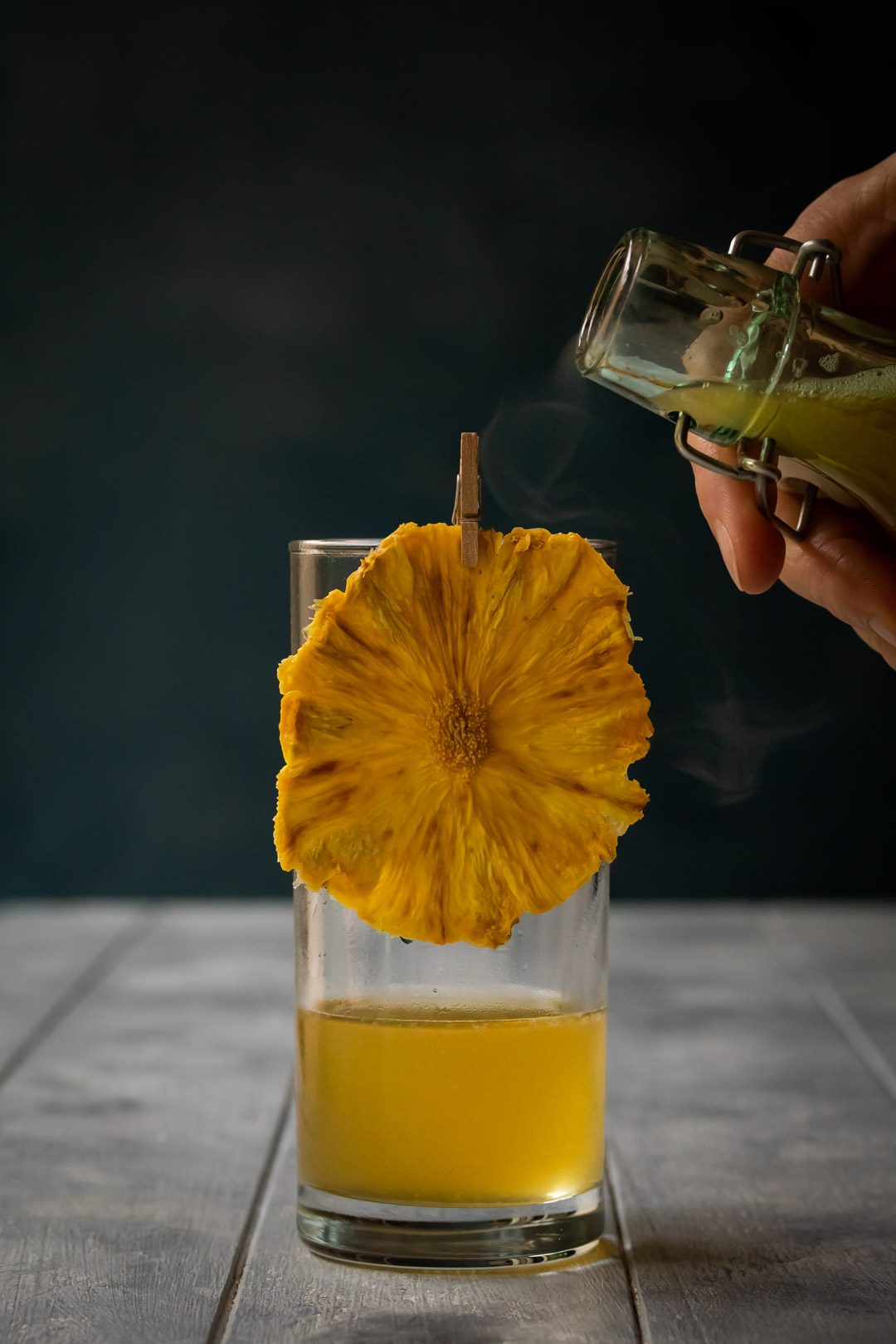
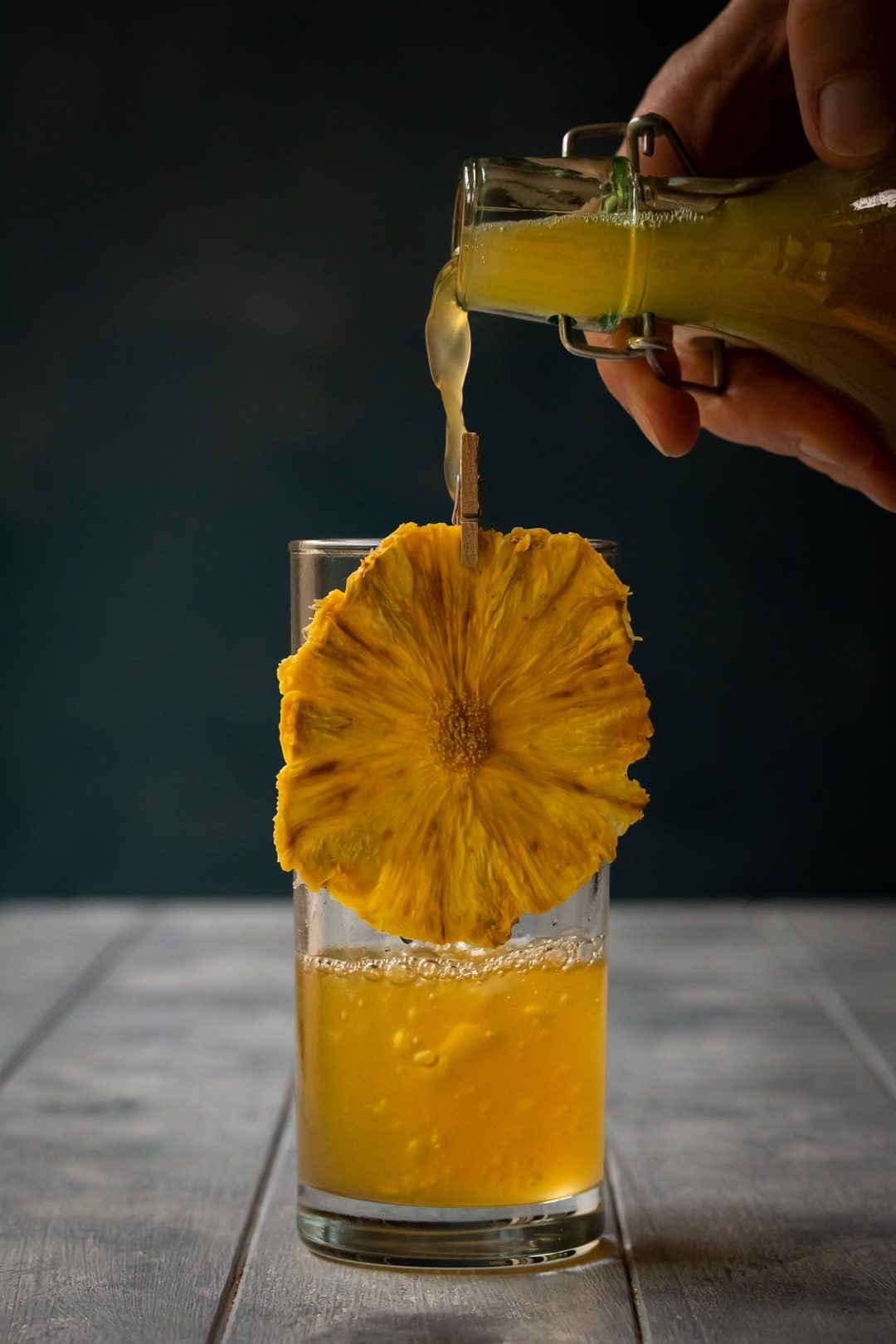
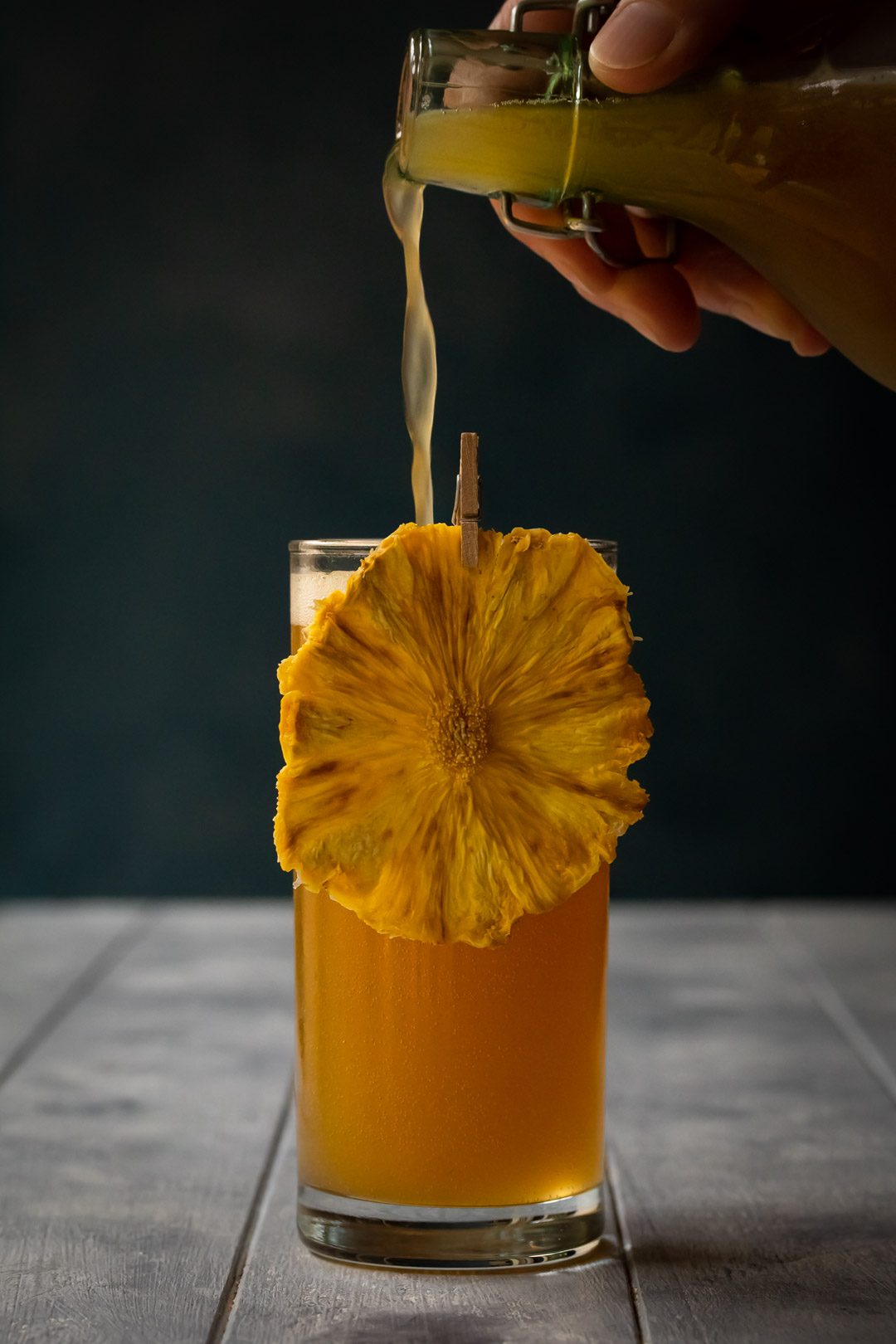
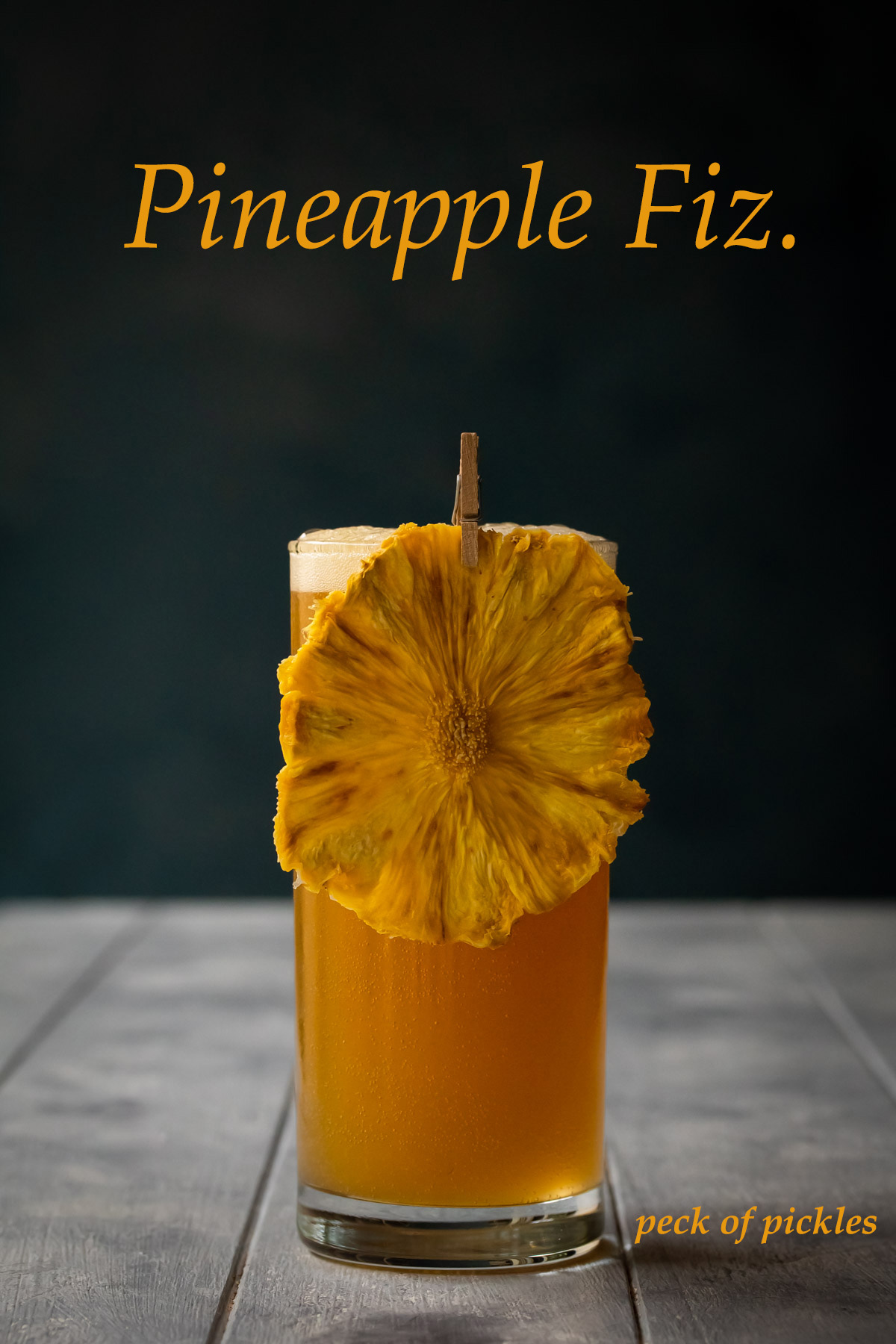
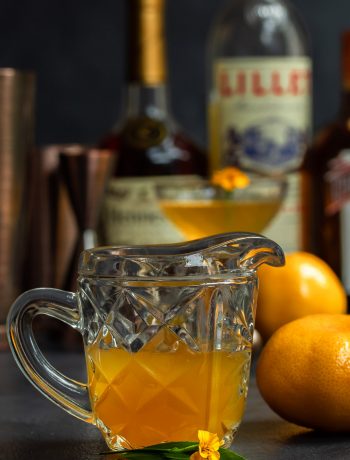
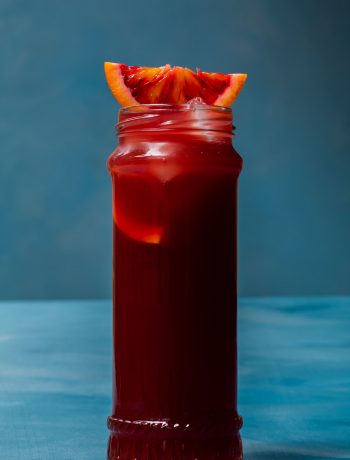
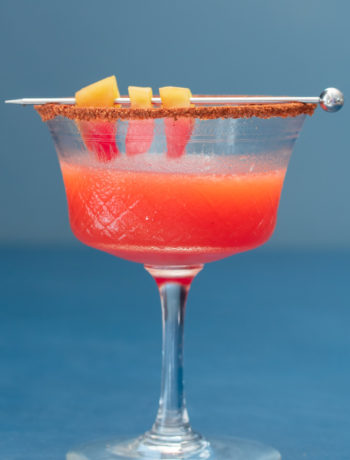
1 Comment
Strawberry fiz mocktail & cocktail | Peck of Pickles
January 19, 2021 at 11:10 pm[…] Brandy and Santa Cruz Rum. For more on the history and many variations on the Fiz see my post on Pineapple Fiz. One notable variation relevant here is the ‘Crushed Strawberry Fizz’ circa 1880 which […]